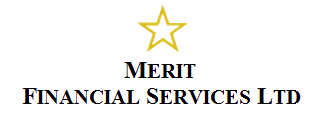
Planning for retirement is probably one of the most important things that we do, because the decisions made while working will determine the standard of living enjoyed (or not) later in life.
 The government recognises that it simply cannot provide a decent pension and in simple terms, pensioners have been getting progressively worse-off, compared with those in work, for more than a decade because wages usually rise faster than inflation.
The government recognises that it simply cannot provide a decent pension and in simple terms, pensioners have been getting progressively worse-off, compared with those in work, for more than a decade because wages usually rise faster than inflation.
Because of this, personal provision is essential and the government wishes to encourage more of us to save for our own retirement and changed the rules in April 2006 so that everyone can now potentially invest a substantial amount of money towards their retirement.
Anyone (together with their employer, if they have one) can invest as much as they wish into any number of pension schemes. However there is an annual allowance beyond which no tax relief is available, set at £40,000 for 2015/16.
For personal contributions tax relief is limited to earnings from trade profession or employment, where this is less than the annual allowance. If employer contributions are made in excess of the annual allowance a substantial tax penalty applies.
Tax relief on contributions is allowable for everyone. For people with little or no earnings, tax relief is available until total contributions for the year reach £3,600. For all others, tax relief is available up to 100% of earnings (subject to the annual allowance) at the highest marginal rate of tax they pay. Any contributions above the annual allowance will trigger a tailored tax bill that will be levied on the individual. Higher and additional rate tax clients will need to claim the relief via self assessment.
The total fund must not rise above a “lifetime allowance” set at £1.25 million for 2015/16. If the fund does rise above the lifetime allowance, a substantial tax charge will apply unless there is “protection” in place.
Workplace Pensions (Auto-enrolment)
Since 2012, employers have been required to automatically enrol all “eligible jobholders” into a workplace pension. Both Employers and Employees have to make minimum contributions into the scheme. The process is being staged, dependent on Employee head count, from 1st October 2012 to 1st February 2018, with large employers being the first to have to take action.
Your Options at Retirement
From age 55, there are a number of options available to you including:
• Drawing your available benefits from the existing provider
• Purchasing an annuity with a different provider on the Open Market, This could potentially increase the payments to you.
• Moving to Flexi-access Drawdown (or Third Way Plan)
• Using the Uncrystallised Fund Pension Lump Sum (UFPLS) rules
• Moving to phased retirement
• Moving to a combination of the above
As an employer, employee or if you are self-employed we can help you choose the best option for you.
THE VALUE OF YOUR INVESTMENT CAN GO DOWN AS WELL AS UP AND YOU MAY NOT GET BACK THE FULL AMOUNT INVESTED. LEVELS AND BASES OF AND RELIEFS FROM TAXATION ARE SUBJECT TO CHANGE AND THEIR VALUE DEPENDS ON THE INDIVIDUAL CIRCUMSTANCES OF THE INVESTOR. THE FINANCIAL SERVICES AUTHORITY DOES NOT REGULATE TAXATION AND TRUST ADVICE AND WILL WRITING.
